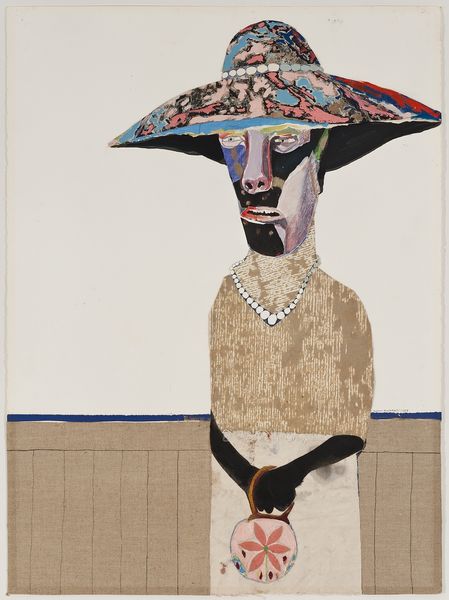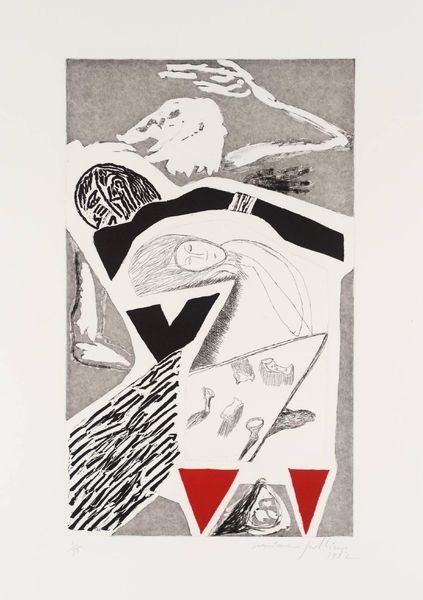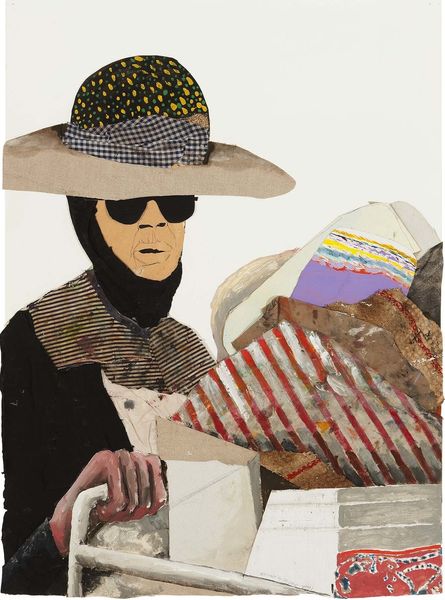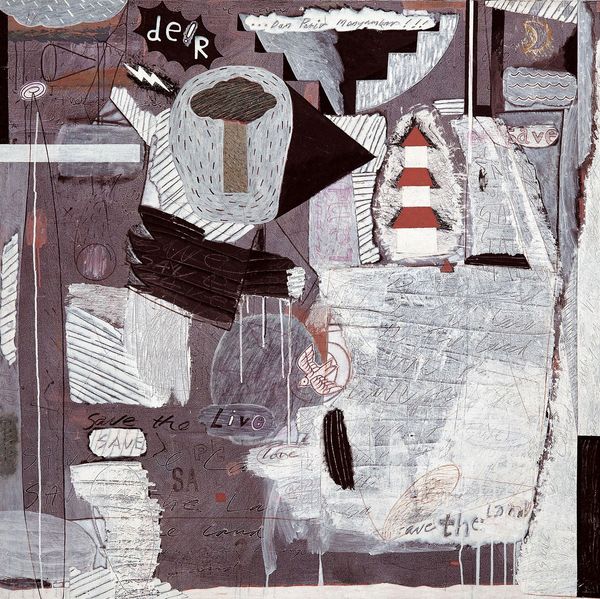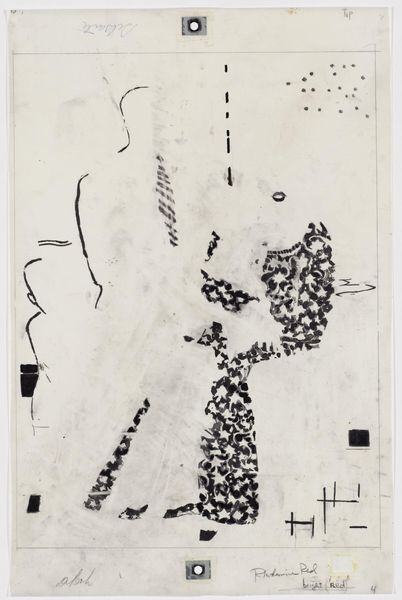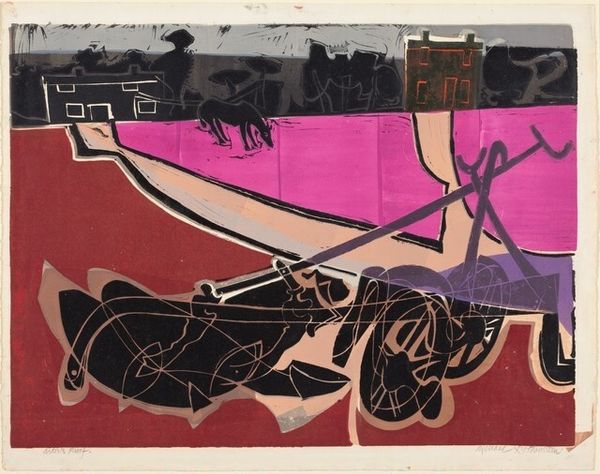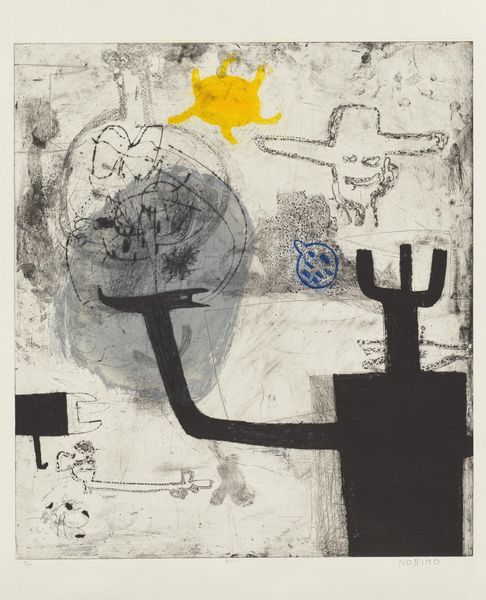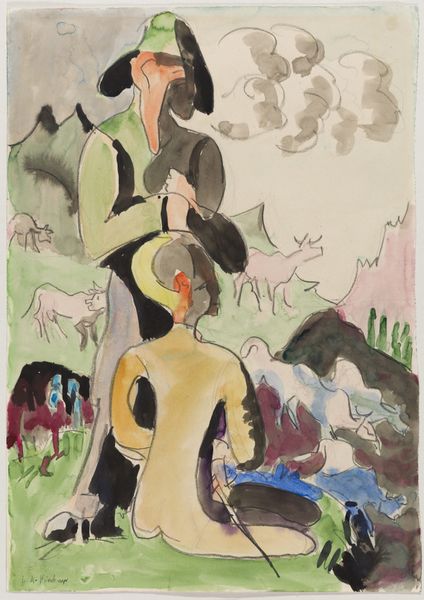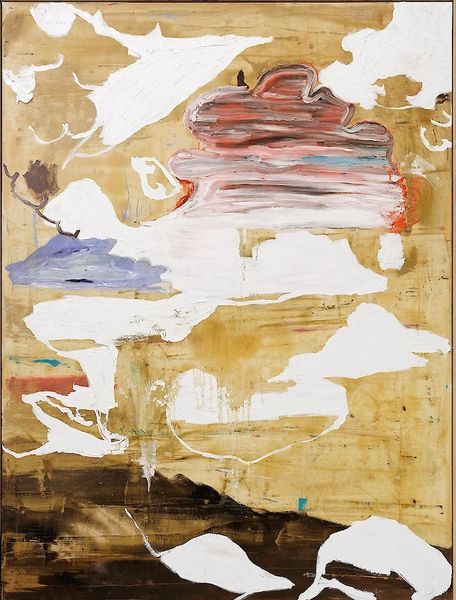
mixed-media, collage, painting, acrylic-paint
#
portrait
#
mixed-media
#
contemporary
#
collage
#
narrative-art
#
painting
#
mixed mediaart
#
acrylic-paint
#
naive art
#
painting art
Dimensions: 28.5 x 22.5 cm
Copyright: Benny Andrews,Fair Use
Curator: The atmosphere here is undeniably mournful; a palpable sense of grief emanates from the canvas. Editor: We’re looking at Benny Andrews’s 1980 mixed-media piece, "Here Comes the Wind." Andrews, throughout his career, often used collage and paint to explore themes of social justice, history, and personal identity. Curator: The top-hatted figure, his face a mask of somber contemplation, is positioned over what appears to be a mass grave, each stone bearing a name. What resonates are those implied stories, each tiny grave a monument to a life. The cultural memory…it’s intense here. Editor: And the way he represents these historical figures – names like “Fitzgerald,” “Franklin” – by writing on pieces of fabric or paper then collaging them onto the canvas…it's as if piecing together fragments of collective memory to challenge existing narratives. It underscores his broader concern with representation and historical visibility, specifically marginalized voices. Curator: Notice how the figure’s gaze seems averted, not confronting us directly, as if the sheer weight of remembrance is too much to bear. Also, there's a stark juxtaposition here. The rough, almost childlike rendering of the crosses contrasts so sharply with the gravity of the subject matter. Editor: Yes, there’s a powerful tension. The crude application mirrors a broader debate in contemporary art at the time, particularly around the social responsibilities of the artist. His use of materials, I think, draws attention to art's power to shape or challenge public understanding of difficult truths. Curator: The mixed media serves as a symbolic representation of the fractured and piecemeal nature of history and identity itself. Editor: Precisely. It reveals Andrews's investment in the politics of imagery. Considering Andrews’ activism, "Here Comes the Wind" seems less like a lament, and more like an awakening. Curator: This piece…it stays with you. Andrews gives visual form to both individual and collective grief through striking symbolic economy. Editor: Indeed. His willingness to grapple with uncomfortable aspects of history cements Andrews’s vital role in the artistic landscape, both then and now.
Comments
No comments
Be the first to comment and join the conversation on the ultimate creative platform.

